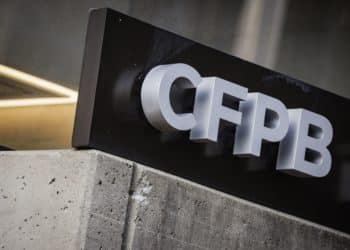Why I’m Afraid of Money

Every week I write a short “ What We’re Reading” post for The Andera Blog, commenting on two to three hot topics in banking innovation and marketing. A few weeks ago my theme was “PFM to the People” because several articles that week ( here, here) had commented on the slow adoption of personal financial management tools by the average consumer. I was particularly fascinated by Movenbank’s then-new video, which advertised PFM as a route to peace of mind. The video helped me realize, for the first time, something counterintuitive about myself: I’m afraid of money.
When I was a child I learned that I was, as my parents said, “afraid of blood.” I cried too much over small cuts, I squirmed away and squeezed my mother’s hand when the doctor took even the smallest sample, and I hyperventilated and had to leave the room the day we learned about the circulatory system in 7th grade biology. As I grew, I realized that what my parents had said wasn’t exactly true; the sight of scraped knees on the playground didn’t perturb me, and I actually enjoyed gory movies. I wasn’t afraid of blood, I was afraid, more precisely, of my own blood.
As an adult I find the same to be true of money. In addition to working, blogging and tweeting for Andera (follow us @AnderaInc), I’m fascinated by monetary economics and spend a fair chunk of free time learning about microeconomic budget constraints and the Federal Reserve System. I literally spend most of my day thinking about money. As a result, I understand that the key to a secure future is a healthy financial management in the present. That said, these are the facts about my personal finances:
- I only open my PFM app to make the anxiety-inducing red notification buttons go away.
- My bank offers me no interest rate and only a fraction of the technologies I have come to expect as a banking blogger, but I still haven’t switched.
- I opened and funded a brokerage account in August, but still haven’t been able to bring myself to choose investments.
- I made my 401(k) investment decisions in 5 minutes on a Friday afternoon in an extremely bad mood.
- I make spending decisions almost entirely on gut, trusting leftover college-student frugality to keep my expenses in check.
- Whenever I take steps to change my behavior on any of the above, I find my mouse inevitably slipping towards Facebook, or the USA today online crossword puzzle, or to go do the dishes.
What’s wrong with me? I’ve gone through stages. At first, I was in denial. I believed my theoretical knowledge would convert painlessly into practical application, eventually, and that I would retire a wealthy woman without much effort at all. Next, I blamed stress; I was starting a new job and blogging on the side, and there wasn’t enough time to think about something as trivial as my personal finances. Then, I blamed boredom; compared to the thrills of writing about the payments revolution, or of diving into the details of Keynesian monetary theory, managing my own money was just so awfully dull. Now, I’ve come to the fourth stage, a tentative understanding that my problem is neither stress nor boredom but a deeper ailment, more difficult to treat: fear.
I fear that I invest in the wrong mutual fund and that my money will disappear in an instant. I fear identity theft and embezzlement schemes, and fear that there are steps I am not taking to protect my savings. I fear that careful examination of my spending and my alternatives will lead to that most unpleasant of emotions, regret. Most of all, I fear that a lack of money will force me to restrict my lifestyle. Partially because I’ve managed to build reasonable expectations, but mainly because I was lucky enough to be born into an affluent family, I have never had to do.
My fears are rational, but my response is definitively not. Instead of investing in even the safest securities, I let my money collect dust in my brokerage money market account or as undeposited checks on my beside table. Instead of learning about security risks, I blindly believe that the institutions I have chosen will do a good job of protecting my money because of the pressures of market competition and some law or other that my wiser, braver forefathers made Congress pass. Instead of planning my spending, I tell myself that I have a job, I have a college degree, I’m going to be fine no matter what I do.
I am not alone. There are millions like me in the United States; in fact, there are millions in worse financial shape. Here are some statistics:
From a 2012 survey of US adults commissioned by the National Foundation for Credit Counseling:
- 56% do not have a budget
- 22% don’t have a good idea of how much they spend on housing, food, and entertainment
From a 2011 survey of US adult women commissioned by LearnVest:
- 66% don’t know where to access relevant financial information
- 90% don’t know how much to save for retirement
- 84% are not very comfortable in their ability to set specific financial goals
From a 2012 survey of households commissioned by the Certified Financial Planner Board:
- 55% are worried about losing invested money
- 55% don’t know who to trust for financial advice
- 52% find investing complicated
Widespread fear and avoidance of money matters has obvious implications for the adoption of PFM tools. It also impacts consumer adoption of other banking technologies, such as mobile payments or mobile banking, (I wrote more on this topic in ” Time to Decide About Mobile Banking Security“) and for new product marketing and customer relationships in general. I like to think of the issue in terms of the technology adoption lifecycle curve. The technology could be a digital tool, like a banking or PFM app, or it could be a new type of financial product or other innovation:
Innovators are most likely to be professional investors, bankers, traders, brokers, and fintech geeks, people who live and breathe finance. The amateur investors come next – financially savvy, but not professional, the one in the family that everyone asks for advice. Then come the early majority, people like me, who understand the need and the availability, but face sticky, irrational fear. Then come the late majority, and finally, the laggards.
In Crossing the Chasm, marketer Geoffrey Moore adds a break in the technology adoption lifecycle curve between the early adopters and the early majority. He argues that the key challenge for any new technology is to make the leap from the early adopters to the early majority, and that many technologies, and many companies, never make it.
Fear, at least partially, defines the chasm in banking technology. The challenge for PFM, mobile payments, mobile banking, and many innovations yet to come, will be to convince consumers that their products are safe and helpful, and to make their user experience so easy that consumers can’t avoid adoption any longer-what MoneyDesktop’s Ryan Caldwell called a “Google level of service” in a Bank Innovation article. My favorite innovators are working hard to do just that.
See the original article on blog.andera.com












